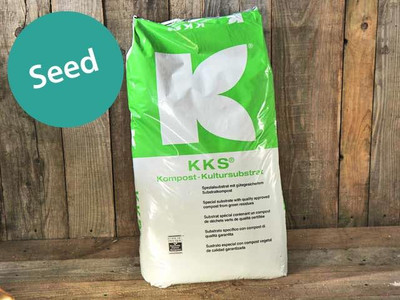How to Grow Microgreens Indoors

Towards the end of summer and into autumn, activity in the vegetable garden slows down as crops are fully grown and their fruit begins to ripen. Winter brassicas are bedded in until spring, and work demands ease off.
At this time of year many gardeners now move their focus indoors to extend the growing season. One way of doing this is by cultivating microgreens: tender young vegetables harvested at the first or second leaf stage.

Why Grow Microgreens?
Microgreens are extremely easy to grow and suitable for the smallest of spaces. They can be grown on a sunny windowsill using a tray with drainage holes or a shallow container; takeaway food trays can actually be very suitable so long as you make some small drainage holes. They are also often grown using hemp fibre mats, which are biodegradable and can be composted after use.
Not to be confused with sprouts (such as broccoli or alfalfa sprouts), microgreens are further along in the growth stage but still very young, with high reserves of energy. They can be ready to harvest in just 2 weeks, sometimes 3 depending on the time of year.

Visiroot Seed Tray 4 pack
View ProductUnlike most adult vegetables, microgreens can be grown all year round. Succession sowing will provide you with a constant supply of fresh leaves or garnishes to use in the kitchen.
Microgreens have been used in restaurants for some time as chefs have taken advantage of their intense flavour and rich textures, making them perfect for soups, salads, garnishes and sandwiches. They are also increasingly eaten raw.
Their popularity is due in part to their nutritional benefits, which have seen them touted as a 'superfood'. Researchers at the University of Maryland have found that microgreens have 40 times more nutrient content than their mature counterparts and contain six times more beta carotene and vitamins K, E and C.

No doubt in part due to the above, microgreens can be relatively expensive when bought in health food stores or from online outlets, so growing them yourself can be a budget-friendly alternative.
What Vegetables Can I Grow as Microgreens?
Technically most plants can be grown as microgreens, but the favoured options are from the brassica family. These include cress (a favourite in cucumber or egg sandwiches), mustard, daikon radish, broccoli, cabbage, and any of the Asian greens (like pak choi and tatsoi). Basil, dill, beetroot, peas, cilantro, rocket and mizuna can all be grown for their tender foliage.

Daikon Radish
View ProductSince microgreens are just the younger version of an adult vegetable, you can buy or seek out standard vegetable seeds when growing them. However there are a couple of things to keep in mind: the seed in question should ideally have a high germination rate, and it's important to get them from a source where chemical or pesticide residue left behind on the seed is limited or unlikely.
How to Grow Microgreens
- Broadcast sow the seeds generously in a tray of moist seed compost. The intention is to grow a blanket covering of plants that support each other.
- Coco coir is also a recommended growing medium due to its moisture-holding qualities.
- Tamp the seeds down and cover with a thin layer of sifted compost.
- Keep the growing medium moist by by watering daily, using a fine rose attachment.
- Cover the propagation tray with a clear lid to retain heat and moisture until the seeds start to sprout.
- After a few days the sprouts will emerge and the cover should be removed.
- The primary cotyledon leaves will develop as the seedlings continue to grow.

A light source should be provided to prevent the seedlings becoming leggy and spindly and potentially 'damping off' (a fungal disease developed in stressful growing conditions). A Grow Light Garden system is ideal for this - if using one, it should be height adjusted to provide a constant distance of about 1”/25mm as the plants grow and develop.
When to Harvest Microgreens
After 10-12 days the true leaf develops: this has a noticeably different shape to the cotyledon leaf, and will continue to grow. By the time this true leaf is fully grown and a second leaf begins to form, the plant is ready to harvest. Using a scissors, cut a complete section of seedlings at soil level and harvest them in a clump.





